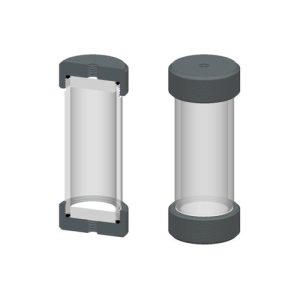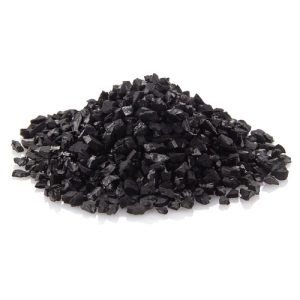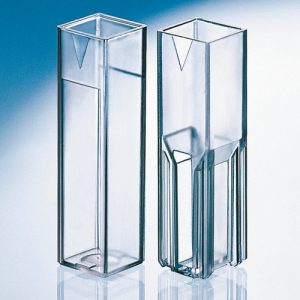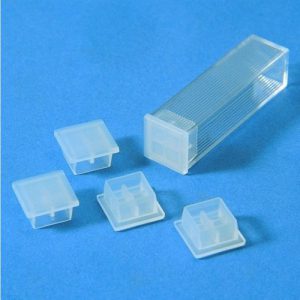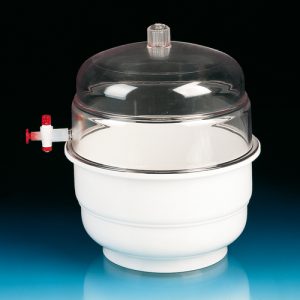The two terms adsorption and absorption describe processes that take place at the interface between two phases. In adsorption, gases or liquids—known as adsorbates—adhere to the surface of a solid material called the adsorbent. In absorption, by contrast, atoms, molecules, or ions from a gas or liquid are taken up into the bulk of a liquid or solid material—called the absorbent.
What Does Adsorption Mean?
The term adsorption derives from the Latin word “adsorbere,” which means “to draw to oneself.” The atoms or molecules inside a solid are held together by bonding forces that act between them in all three spatial directions.
However, atoms or molecules at the surface have unbound valences that allow them to attract or bind gases and dissolved substances. Depending on the type of binding of the adsorbates to the adsorbing surface, a distinction is made between physical adsorption, physisorption, and chemical adsorption, chemisorption.
What Is Physisorption?
Physical adsorption relies on weak, long-range interactions—such as van der Waals forces, hydrogen bonds, or dipole-dipole interactions—between the adsorbate and the surface. Chemical bonds of the adsorbate molecules are preserved in the process. Due to the longer range of the weak bonding forces, several adsorption layers can form.
The binding energy in physisorption is relatively low, less than 100 kJ/mol. When atoms or molecules encounter a solid surface, they may either be reflected or become adsorbed. If the particles are adsorbed, they release kinetic energy in the form of heat. This is an exothermic reaction.
Physical adsorption is reversible; an equilibrium forms between adsorbing and desorbing particles. This equilibrium depends on the size of the adsorbing surface, temperature, and the concentration of the adsorbate or, in the case of gases, the partial pressure of the gas. Initially, the adsorption rate is relatively high, but decreases with increasing surface coverage until equilibrium is reached. Desorption can occur by increasing the temperature or lowering the pressure.
Due to their large surface area, materials such as activated carbon, activated coke, silica gel or molecular sieve sorbents are frequently used as adsorbents.
These granules and sorbents are used in filtration systems within filter housings, for example for gas purification.
What Is Chemisorption?
In chemisorption, chemical bonds are formed between adsorbate and adsorbent molecules or atoms. As a result, both the adsorbate and the adsorbent can be chemically altered. The binding energies here are around 800 kJ/mol.
Chemisorption is usually irreversible, i.e., not an equilibrium reaction; desorption can often only take place at higher temperatures. The chemically bound layer typically consists of just a single monolayer. Many processes in heterogeneous catalysis are based on chemical adsorption. Reactants adsorb onto a catalyst and are thereby transferred to an activated state. Chemical reactions with other reaction partners can thus proceed more easily.
What Does Absorption Mean?
The term absorption derives from the Latin “absorbere” and means “to devour” or “to swallow.”
Absorption in Physics
When electromagnetic radiation such as light strikes a medium, energy is absorbed. The electrons in the absorbing medium are excited to a higher energy level. The absorbed energy can subsequently be released in another form, such as heat.
If not all wavelengths are absorbed uniformly, the medium appears colored. For example, chlorophyll, a natural pigment, mainly absorbs violet, orange, blue and yellow light; green light is reflected. This is why plant leaves appear green to us.
The absorbed energy is taken up by chlorophyll molecules and serves to produce sugar and oxygen through photosynthesis.
In spectroscopy using cuvettes, the absorption of radiation as a function of wavelength is used to identify gases, liquids or solids based on their absorption spectra. In photovoltaics, absorbed sunlight is converted into electrical energy. In photochemical reactions, absorbed light acts as an initiator. Sunscreens contain various components that reflect, scatter or absorb UV light.
Absorption in Chemistry
As with adsorption, a distinction is made in chemistry between chemical and physical absorption. In physical absorption, for example, water is absorbed in a sponge or carbon dioxide in hexane, without forming chemical bonds. In chemical absorption, the dissolution of the absorbate in the solvent occurs through chemical reactions. Examples of chemical absorption are the reactions of ammonia in water to form ammonium hydroxide, and hydrogen chloride with water to form hydrochloric acid.
Adsorption and Absorption in Purification Processes
In water treatment, activated carbon filters remove dyes and adsorbable halogenated hydrocarbons (abbreviated AOX, where X stands for a halogen) through adsorption. Enrichment of water with atmospheric oxygen, chlorine or ozone occurs through absorption.
Both processes are also used in flue gas desulfurization. In regenerative flue gas desulfurization, sulfur oxides adsorb onto activated coke. The flue gas passes upward through the adsorber, while the activated coke flows downward in a countercurrent direction. The loaded activated coke is subsequently regenerated in a thermal process. The sulfur dioxide released in this process can be used for sulfuric acid production.
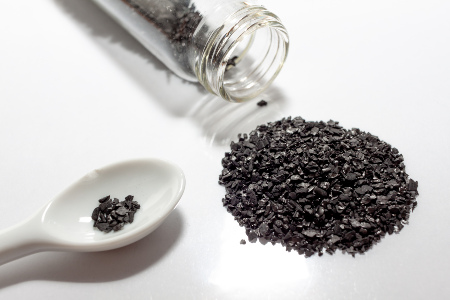
In non-regenerative processes, the flue gas is passed through a gas wash bottle or absorber containing calcium carbonate and calcium oxide, usually in countercurrent flow. The sulfur oxides form calcium sulfite with the calcium ions, which is oxidized to calcium sulfate by adding oxygen. The difference between adsorption and absorption in flue gas desulfurization is that adsorbed sulfur oxides are recycled, while gypsum is produced as a waste product.
In the purification of raw biogas, hydrogen sulfide is removed by adsorption onto activated carbon or iron-containing filter material. In pressure water washing, the raw biogas is cleaned in an absorber under pressure in water, whereby carbon dioxide and other interfering gases dissolve in the water.
In semiconductor technology, corrosive and toxic gases such as trichlorosilane, hydrogen bromide, boron trichloride and volatile organic compounds are produced. The exhaust gases can be cleaned using dry bed absorption or adsorption, which contain activated carbon or specially developed granules.
In chemistry, adsorption chromatography has established itself as a valuable method for the separation, purification and analysis of mixtures.
Adsorption as a Drying Process
In industry, desiccants such as silica gel, bentonite, or molecular sieves are used to protect products from moisture by adsorbing water molecules onto their surfaces.
Almost everyone should be familiar with small paper sachets filled with silica gel that accompany shipments. Cat litter and desiccators in chemistry also contain silica gel. Bentonite serves in construction for sealing, in the beverage industry for precipitating suspended particles and is a base material for many cosmetics. Molecular sieves are mainly used in chemistry for drying gases and many solvents.
Adsorption in Heterogeneous Catalysis
Many basic chemicals are produced through heterogeneously catalyzed processes. Examples include ammonia synthesis from hydrogen and nitrogen using iron/aluminum oxide catalysts according to the Haber-Bosch process, sulfuric acid production from sulfur dioxide and oxygen using vanadium oxide catalysts according to the contact process, olefin polymerization using Ziegler-Natta catalysts, or nitric acid production from ammonia and oxygen using platinum/rhodium meshes according to the Ostwald process.
Automotive exhaust gas purification is also based on chemical adsorption. The catalyst consists of ceramic material coated with precious metals such as platinum or rhodium. Carbon monoxide and nitrogen oxides adsorb on the catalyst surface and react to form carbon dioxide and nitrogen.
Adsorption and Absorption in Refrigeration Systems
In conventional compression refrigeration systems, compression of the gaseous refrigerant is achieved by a compressor. In absorption refrigeration systems, a liquid solution absorbs the refrigerant. This mixture is then heated so that pressure and temperature rise. In adsorption refrigeration systems, the refrigerant attaches to a solid. The pressure and temperature increase here also occurs through heat. The acquisition costs of these two refrigeration systems are significantly higher than compression refrigeration systems, but they are more economical when waste heat from power plants, waste incineration plants or biogas plants is available.
Adsorption plays a role in many everyday situations—from range hoods and cigarette filters to carbonic acid bubbles. Absorption also simplifies daily life, whether in sponges and diapers, sweetening coffee and tea, or enhancing flavor through salt.
Image sources: Title image | © artemidovna – stock.adobe.com Activated carbon | © eaumstocker – stock.adobe.com
 Reichelt Chemietechnik Magazine
Reichelt Chemietechnik Magazine

